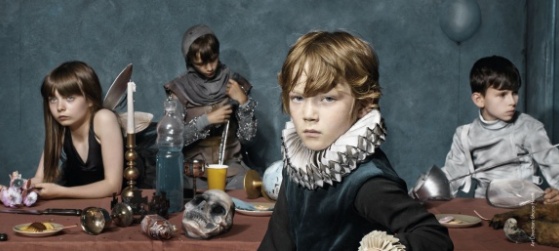It’s always hard to get young modern audiences interested in Shakespeare, but National Theatre Live’s modern interpretation starring Benedict Cumberbatch has succeeded in garnering a new fan base for a 400-year-old literary classic.
Screened to packed audiences in both the Regina A. Quick Center for the Arts and the Barbican Theatre in London, “Hamlet” was broadcast in a livestream performance on Thursday, Oct. 22.
The production included big name stars such as Cumberbatch (“Sherlock,” “The Imitation Game,” “The Hobbit”) starring as Hamlet and Ciarán Hinds (“Jane Eyre,” “Frozen,” “Game of Thrones”) who played Hamlet’s uncle, King Claudius.
The acting in this play was fantastic. Cumberbatch and Sian Brooke, who played the doomed Ophelia, particularly stood out in the cast. Cumberbatch’s impassioned acting added drama and intrigue to Hamlet’s soliloquies, and Brooke’s more subtle approach made Ophelia’s descent into madness even more poignant.
Another shining star in the cast was Anastasia Hille, who played Hamlet’s mother Gertrude. Hille’s most moving scene was quite possibly the best in the entire production. The upsetting scene was Act 3, Scene 4, in which Hamlet angrily screams at his mother for marrying the murderer of his father so quickly, while Gertrude tearfully expresses her guilt and fear over her son’s sanity.
Along with the acting, the effects also made the play come alive. Although it is difficult to have many effects in a play with a live audience, National Theater Live found a way to do so, skillfully. For example, after the first half of the play, to add to the drama, the entire set was covered by a dark sooty dirt-like material, which came onstage in a storm after a particularly evil speech by Claudius. The characters, most of whom were inwardly dirty, were now outwardly dirty as well. Additionally, the lighting was dark and eerily green whenever the ghost of Hamlet’s father appeared onstage, highlighting the supernatural dimension of the play.
The set was also very well done. The play began in a small dark room filled with the belongings of Hamlet’s deceased father, but no furniture. Hamlet, sitting on the floor, listened to a record player and inhaled the scent of a jacket before donning it. The wall of this room then came away to reveal a larger dining room. The home in which the Danish royal family lived appeared very Gothic with its huge staircase and paintings of various royal family members.
Despite the passionate performances and intricate set designs that made the play come alive, there was one hindrance to the storytelling of the show: the costuming. There was a strange mixture of modern and medieval clothing. In some scenes, Hamlet wore a hoodie and a T-shirt, and in others he was costumed in a soldier’s uniform. Especially jarring were the plaid shirt and modern glasses of Horatio. These costume design choices seemed to have no bearing on the plot.
This blaring anachronism, and others, did not add anything to the play. It was distracting to see the aforementioned record player, and a camera carried by Ophelia carried for no apparent reason. These decisions were especially hard to explain since the director chose not to modernize the language. Ultimately, these modern intrusions unnecessarily took the audience out of the story and took away from the play more than they added.
https://www.youtube.com/watch?v=SxraXR_tfSA


Leave a Reply